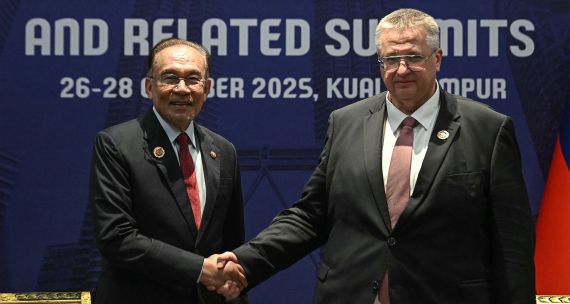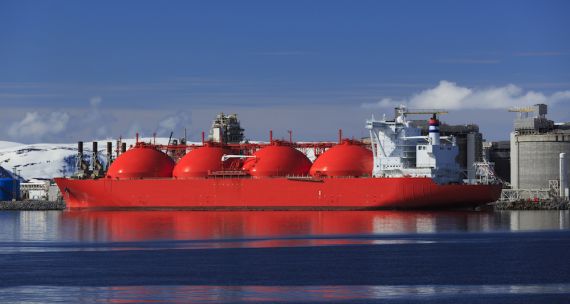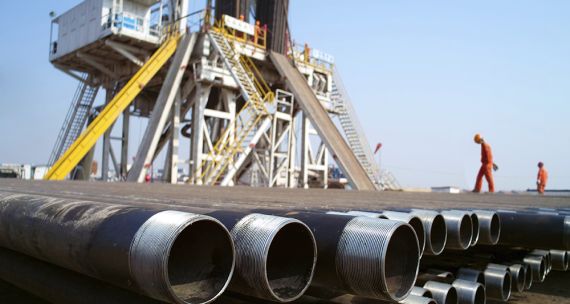Canada is an important global energy producer and the largest supplier of energy products to the United States. With Asia's rapidly growing need for energy imports in the early 2000s, Canada hoped to reduce its almost 100% reliance on the United States as an export market for oil and natural gas by expanding to Asia. Canadian oil producers were looking to Asian markets to secure high international prices and new consumers for their product. Canadian natural gas producers were also seeking new buyers as exports to the United States steadily fell with the rise in domestic U.S. shale gas production.
This interest in exporting to Asia created the impetus to increase the volume of product that could be moved from extraction sites in Alberta and eastern British Columbia to the west coast for shipment. As a consequence, there was a boom in proposals to develop oil and gas pipelines and liquefied natural gas (LNG) export facilities in British Columbia. Kinder Morgan and Enbridge Inc. proposed two pipelines that would collectively transport more than 1,400,000 barrels of oil per day to the British Columbia coast. By mid-2014, seventeen LNG terminals had been proposed in the province, with the provincial government aiming to have three facilities operational by 2020. [1]
Fast forward two years, however, and Canada's hopes for diversification of its export markets for fossil fuels have dimmed considerably. The country exports very little oil to Asia, while its exports of oil to the United States have continued their general upward trend. [2] With respect to LNG, prospects for export to Asia are negative, at least in the short term. The International Energy Agency (IEA) noted in 2015 that no Canadian LNG project will be operational by 2020. [3]
So what contributed to this reversal? First, the fall in oil prices, and the associated slide in LNG prices, has damaged the economic viability of Canadian LNG projects, many of which are greenfield sites with high capital costs. Landed prices for LNG in Asia currently sit at less than $5 per million British thermal unit (mmbtu), [4] while Canadian projects require $10–$13/mmbtu to be profitable. [5]
Second, demand for LNG in key Asian markets has softened just as global production is increasing. South Korea and China, the world's second- and third-largest LNG importers, respectively, saw LNG imports decline in 2015 for the second consecutive year. [6] This reduction was largely attributed to economic slowdown and, in the case of South Korea, an increase in power generation from coal. At the same time, LNG markets have moved from tight to growing supply. Projects to produce 130 million tonnes per annum (mtpa) of LNG are currently under construction, most of which will come online before 2019. [7]
In the case of oil, pipeline and infrastructure politics continue to limit Canada's access to oil markets in both the United States and Asia. This is illustrated by ongoing public protest of Enbridge's proposed Northern Gateway pipeline (that would stretch from Alberta to British Columbia) and by the U.S. Department of State's denial of a presidential permit for the Keystone XL pipeline in November 2015. In order to sidestep this pipeline capacity issue, Canadian oil producers have substantially increased transportation by rail, reaching a near high of 106,704 barrels per day in December 2015. [8]
Third, government priorities for energy exports have shifted in 2015 with the change in governing parties in Ottawa as well as in Alberta, Canada's largest oil- and gas-producing province. While both governments remain committed to finding new markets for Canada's oil and gas, they have voiced strong support for increasing clean energy production and exports in order to reduce carbon emissions and the impact of fluctuating oil prices on Canada's economy. The 2016 federal budget reflects this commitment. The government allocated C$1 billion over four years to support clean technology development and established the C$2 billion Low Carbon Economy Fund to support activities at both the provincial and federal levels to curb carbon emissions. [9] Clean energy is already playing a much larger role in Canada's trade strategy.
Whether this somewhat dimmed hope for diversifying oil and gas export markets will continue in the long term will depend on a number of market and political factors. Ongoing pipeline politics are likely to remain Canada's largest barrier to increasing oil exports to the United States and Asia. But if Canada can get oil to tidewater, analysis suggests that there will be a market. The IEA predicts that the supply-demand balance will start to be restored around 2017. Asian import demand will continue to grow, although not as strongly as anticipated before 2014, in part due to structural changes and slower growth in the Chinese economy. [10] However, Canada would still face strong competition to supply that demand, especially from Saudi Arabia, Russia, and Iran.
With respect to LNG exports, there remains some optimism since companies make decisions based on long-term market fundamentals. Canadian LNG projects require an oil price of around $70–$80 per barrel to move forward, a conceivable oil price according to projections by the IEA. [11] The future of these projects will also depend on supply-demand balance. Since high-demand scenarios generally suggest global LNG demand of 500 mtpa by 2025, not all of Canada's 300 mtpa of proposed capacity will need to be developed. However, a number of analysts suggest that some space in the market could open for Canada around 2025. [12] Canada's fossil fuel exports may benefit from the fact that many Asian governments are concerned about energy security and continue to express interest in Canadian oil and gas for market diversification purposes.
While the future of Canada's oil and gas exports to both the United States and Asia continues to be uncertain, it is clear that global demand for alternative energies is increasing. Canada can export abundant uranium for use in India's and China's growing nuclear fleets, clean hydropower to the United States, and a wealth of other clean technology expertise. Canada will need and want to enhance export of its clean energy assets in order to ensure the future health of its energy sector.
This piece was first published by The National Bureau of Asian Research (NBR) on May 26, 2016, and is part of a series of briefs commissioned by the NBR for its upcoming 2016 Pacific Energy Summit. To learn more about the Summit, please visit www.pacificenergysummit.org. To request an invitation, please email pacificenergy@nbr.org.
NBR is an independent, nonpartisan research institution committed to informing and strengthening U.S. policy toward the Asia Pacific. NBR also helps train the next generation of scholars who concentrate on Asia. This piece was reprinted by permission and the NBR retains all rights to this material in all languages. Copyright (c) The National Bureau of Asian Research (NBR).
Endnotes
[1] Ministry of Energy and Mines (British Columbia), "Liquefied Natural Gas: A Strategy for BC's Newest Industry," http://www.gov.bc.ca/ener/popt/down/liquefied_natural_gas_strategy.pdf.
[2] U.S. Energy Information Administration, "U.S. Imports from Canada of Crude Oil and Petroleum Products," April 29, 2016, https://www.eia.gov/dnav/pet/hist/LeafHandler.ashx?n=PET&s=MTTIMUSCA1&f=M.
[3] International Energy Agency (IEA), Medium-Term Gas Market Report 2015 (Paris: OECD/IEA, 2015).
[4] U.S. Federal Energy Regulatory Commission, "World LNG Estimated Landed Prices: Mar-2016," April 2016, http://www.ferc.gov/market-oversight/mkt-gas/overview/ngas-ovr-lng-sendout.pdf.
[5] Based on interviews conducted by the Asia Pacific Foundation of Canada.
[6] "South Korea's Kogas Cuts 2015 LNG Imports by 13.5% to 31.41 Million Mt on Weaker Demand," Platts, http://www.platts.com/latest-news/natural-gas/seoul/s-koreas-kogas-cuts-2015-lng-imports-by-135-to-26368637.
[7] International Gas Union, "World LNG Report," 2015, http://www.igu.org/sites/default/files/node-page-field_file/IGU-World%20LNG%20Report-2015%20Edition.pdf.
[8] National Energy Board (Canada), "Canadian Crude Oil Exports by Rail—Monthly Data," https://www.neb-one.gc.ca/nrg/sttstc/crdlndptrlmprdct/stt/cndncrdlxprtsrl-eng.html.
[9] Department of Finance (Canada), "A Clean Growth Economy," in Growing the Middle Class (Ottawa, 2016), chap. 4, http://www.budget.gc.ca/2016/docs/plan/ch4-en.html.
[10] IEA, Medium-Term Oil Market Report 2016 (Paris: OECD/IEA, 2016), 9.
[11] "LNG Exports from Canada a Distant Prospect, Analyst Says," CBC, March 3, 2015, http://www.cbc.ca/news/business/lng-exports-from-canada-a-distant-prospect-analyst-says-1.2978953.
[12] Ieda Gomes, Natural Gas in Canada: What Are the Options Going Forward? (Oxford: Oxford Institute for Energy Studies, 2015), https://www.oxfordenergy.org/wpcms/wp-content/uploads/2015/05/NG-98.pdf.





